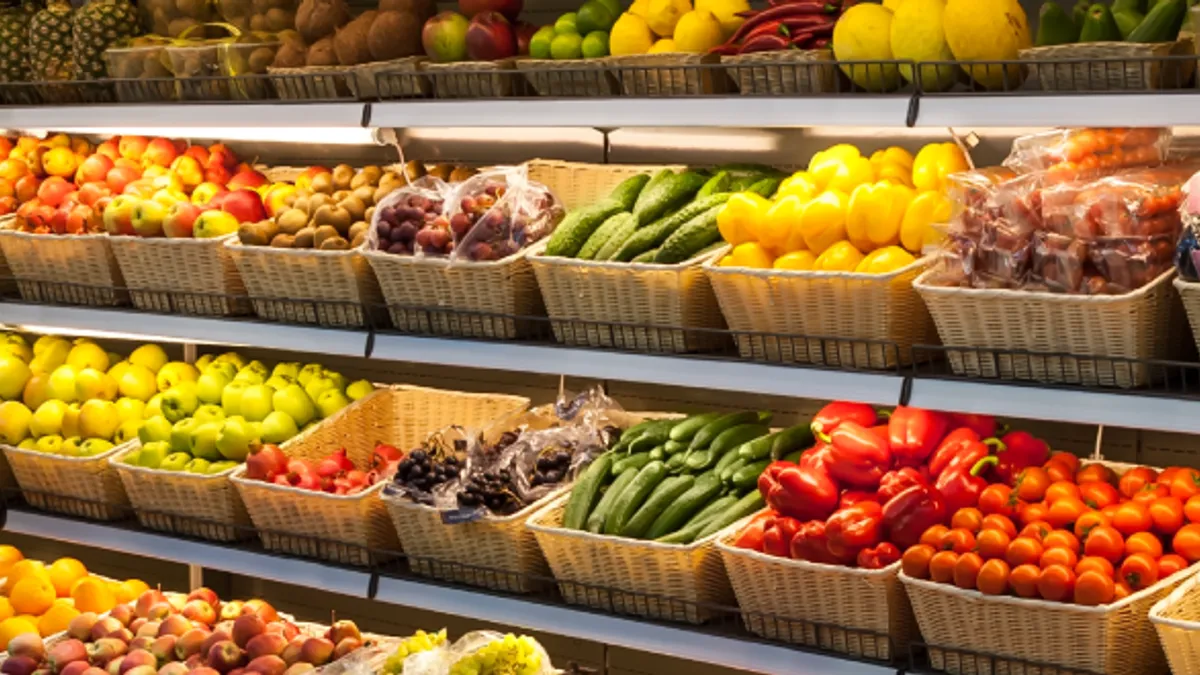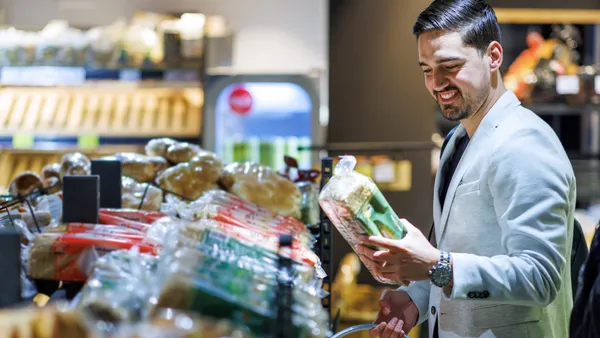If you're a grocery professional kept awake at night by the problem of food waste, you're not alone. There are more reasons than ever to worry about the hundreds of millions of tons of food lost to waste annually.
There's the financial angle: What other industry, already working with paper-thin margins, accepts throwing away three or four percent more as part of the cost of doing business?
There's also the moral point of view to consider: On a planet that is home to hundreds of millions of hungry people and under urgent pressure from population growth, water scarcity and climate change, wasting food—about 30 percent of all food produced, according to the United Nations—is indefensible.
Then there's the environmental cost. Wasted food often ends up rotting in landfills, emitting methane, a greenhouse gas 25 times more harmful than carbon dioxide. A recent report by the International Panel on Climate Change found that between 2010 to 2016, global food waste and loss contributed 8 to 10 percent of human-caused greenhouse gas emissions.
All of these reasons are enough to give anyone concern, and with grocers increasingly meeting consumer demand for fresh foods, the potential for waste is growing. At the same time, so is the global "food rescue" movement. Both the U.N. and the U.S. government have set a goal of reducing food waste by 50% by 2030, and grocer practices are under scrutiny by governments and NGOs.
The good news is that grocers are in a powerful position to help stanch food waste.
"Food value-chain players... can undertake a range of food waste prevention interventions," notes a recent Ellen MacArthur Foundation report on advancing the circular economy. The report also offers suggestions to help grocers manage food waste. "Retailers can contribute by better matching supply with fluctuating demand for different food types and discounting soon-to-expire products."
Today’s RFID technology—which has vastly evolved from early industry experiments—offers grocers the greatest potential for reducing waste that the industry has seen in decades. RFID enables grocers to see exactly what they have in stock and on order, and to better manage it in a variety of ways.
Aligning inventory with demand
Tagging every individual food item with an RFID label enables grocers to track sales down to the last box, bottle, and beefsteak. With more accurate and visible data, grocers can tie supply to demand, markdowns can be done faster, donations of surplus food can be made more swiftly and ordering can be done more accurately. With a more accurate understanding of demand—and of how it differs among stores—grocers can easily reduce overstocking that contributes to waste.
Better managing expiry
Like so many in-store processes, checking expiration dates is generally performed by hand. RFID tagging alerts store personnel to expiring products with a glance at a screen and allows them to more proactively discount or otherwise promote soon-to-expire items.
Closer monitoring of temperature-sensitive products
Most grocers use temperature sensors and other solutions to avoid spoilage. Combining those capabilities with the greater visibility and shareability of RFID-generated data expands grocers' ability to stay on top of temperature and ensure that foods are stored optimally.
More precise product removal during recalls
Few things are more wasteful than clearing entire shelves' worth of product into garbage bins during a product recall because no one knows exactly which items are affected. RFID tagging enables unprecedented traceability during recalls, letting suppliers and grocers quickly pinpoint tainted products. In some cases, affected food items have been located in about ten seconds rather than over multiple days with manual checking. Especially when combined with blockchain and other track-and-trace technologies, RFID tagging can help keep consumers safe and prevent significant volumes of food from being discarded.
Potential food waste reduction of as much as 20 percent.
At Avery Dennison, we believe RFID adoption can help grocers cut food waste by as much as 20 percent, based on pilot testing. Similarly, we believe RFID tagging can cut labor costs by as much as 50 percent, by radically speeding tasks like checking expiration dates.
RFID without limits.
Some readers might remember when the grocery industry experimented with RFID in the 1990s. Cost was a barrier to wide adoption, as was the performance of the RFID tags themselves.
Though the core technology in RFID is the same, today's RFID bears little resemblance to its predecessors. When the grocery industry first looked at RFID, tags were cost-prohibitive. Smartphones didn't exist. Sensor technology was young. Tags didn't always work on certain items, and standards to ensure consistent performance were still being worked out. Today, RFID technology is fully standardized, the price per tag has come down substantially, and grocers can reliably tag 100 percent of the items on their shelves, including microwavable packaging and packaging containing metal and liquids. Combine these advances with emerging capabilities like predictive analytics, blockchain, and sophisticated sensor technology, and you get solutions that are nothing less than industry-changing. Over time, the data collected through RFID-enabled supply chains could help producers optimize their supply based on customer demand and adjust quickly when demand fluctuates. Such optimization could also contribute to better land management and, ultimately, to planting and harvesting only crops for which there is a demand.
In recent years, apparel brands and retailers have demonstrated the many cost-saving advantages of RFID, and today the technology is well on its way to adoption in a number of other industries. In Japan, a broad initiative to improve efficiency and reduce waste and labor costs among convenience stores is illustrating the potential for RFID to transform that sector. If the wider grocery industry follows suit, it might soon be that, instead of lying awake worrying about food waste, grocers will stay up imagining all the ways RFID can help eliminate it.
Join us at Verge 19 conference and meet the Avery Dennison team to explore scalable, cross-cutting food technology solutions driving a sustainable future.










